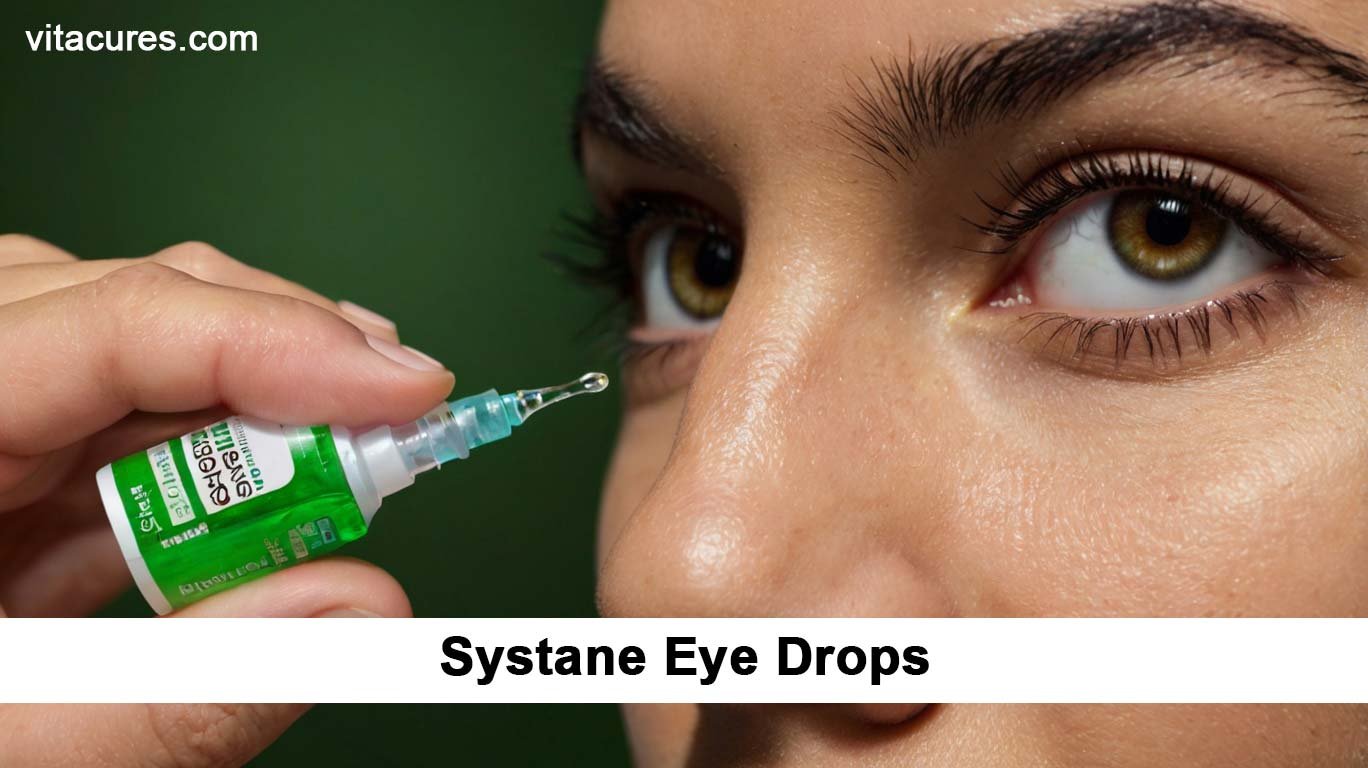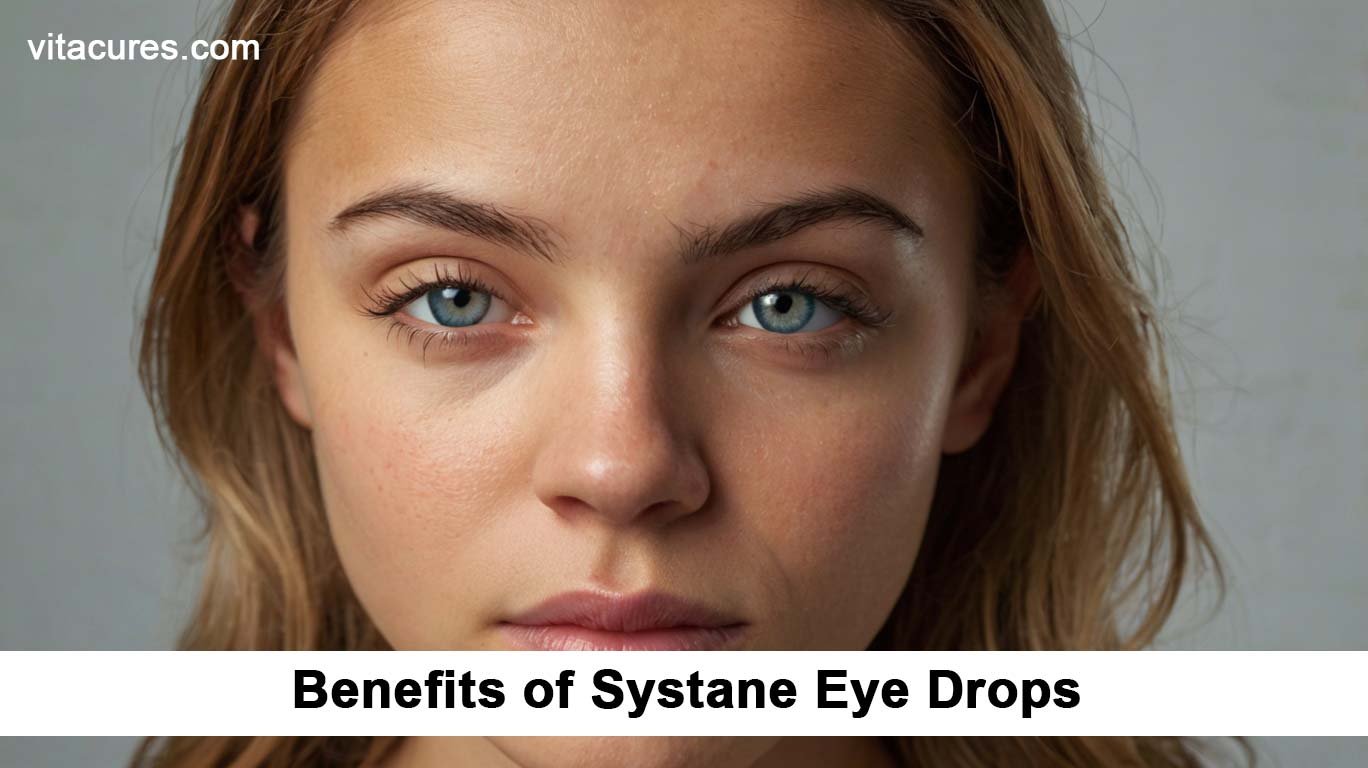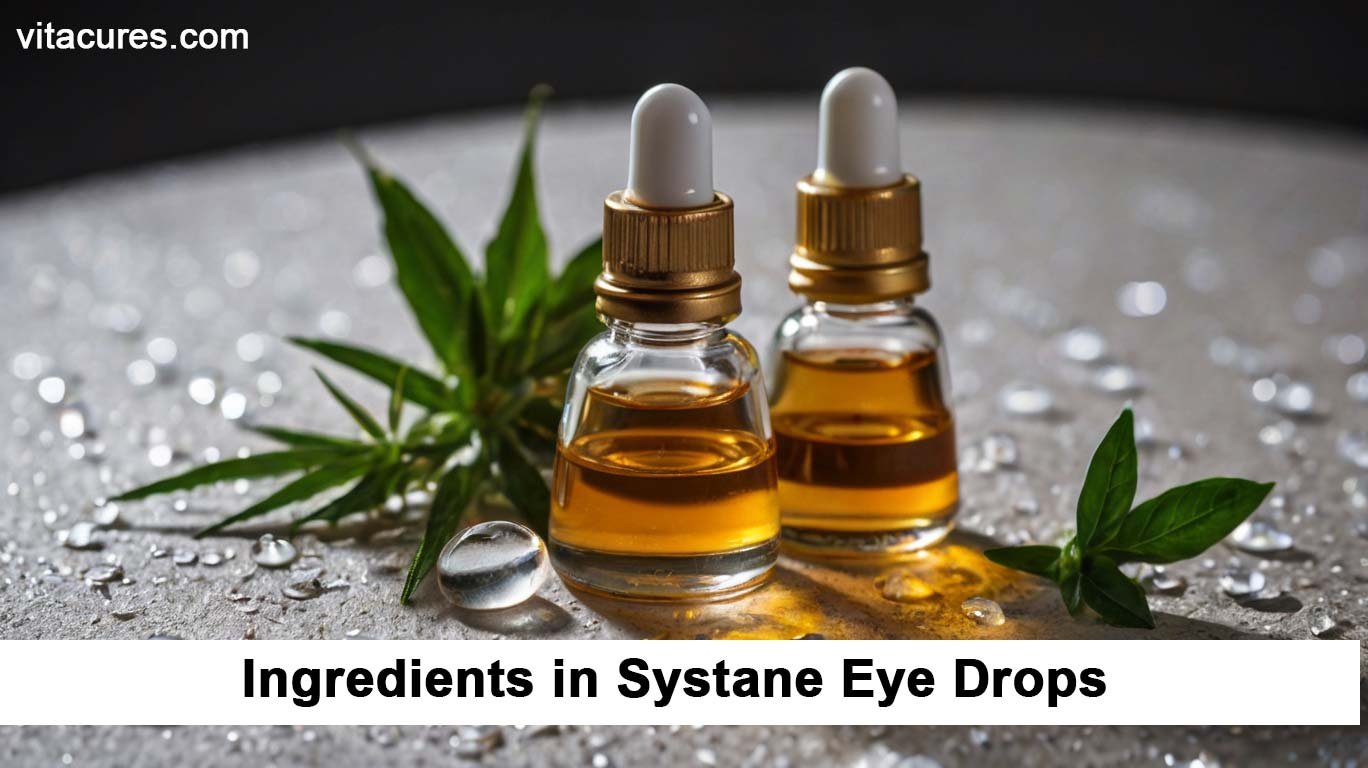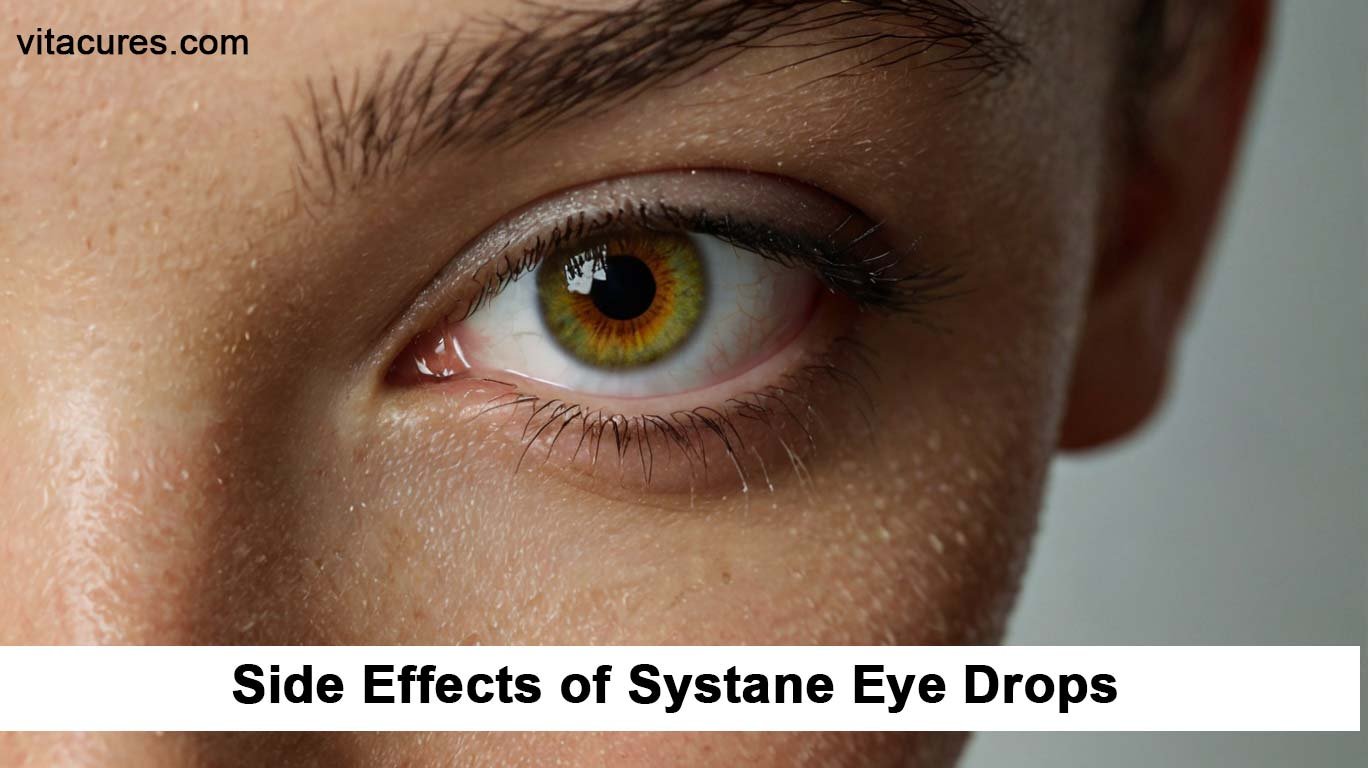Key points of Systane Eye Drops
- Systane Eye Drops
- Benefits of Systane Eye Drops
- How to Use Systane Eye Drops
- Ingredients in Systane Eye Drops
- Side Effects of Systane Eye Drops
- FAQs about Systane Eye Drops
- Comparison of Systane Eye Drops
- Where to Buy Systane Eye Drops
- how to store systane extra eye drops
Systane Eye Drops

Systane eye drops are a well-known brand of lubricating eye drops, commonly used to relieve dry eye symptoms. They help to soothe irritation and maintain moisture on the outer surface of the eyes. Here’s a more detailed look at the brand, including its history, manufacturer, and the various types available:
History of Systane Eye Drops
Systane was introduced by Alcon Laboratories, a leader in eye care products. Since its launch, Systane has expanded its product line to meet a range of eye care needs, becoming one of the most recommended brands by eye care professionals for dry eye relief.
Manufacturer Information
Systane is manufactured by Alcon, a global medical company specializing in eye care products. Alcon was originally part of Novartis but became an independent company in 2019. It is well-regarded in the eye care industry for its innovations and contributions to improving eye health.
Types of Systane Eye Drops
Systane offers a variety of eye drops to cater to different dry eye conditions:
- Systane Balance – Designed for long-lasting relief of dry eye symptoms, particularly for individuals with meibomian gland dysfunction.
- Systane Ultra – Provides temporary relief of eye dryness and is ideal for people who need fast-acting hydration.
- Systane Complete – Uses nano-droplet technology to provide fast and long-lasting relief, suitable for all types of dry eye.
- Systane Gel Drops – A thicker gel formulation that provides a protective shield over the eyes, ideal for nighttime use.
- Systane Nighttime – An ointment designed to protect the eyes overnight and provide relief from dry eye symptoms by morning.
Benefits of Systane Eye Drops

Systane eye drops offer several benefits, particularly for those dealing with dry eyes, eye irritation, and contact lens-related discomfort. Here are some of the key advantages of using Systane eye drops:
1. Relief from Dry Eyes
- Moisturizing Effect: Systane eye drops provide essential moisture to eyes that are dry, scratchy, and uncomfortable. This is particularly beneficial for people who experience dry eye symptoms due to factors like computer use, reading, air conditioning, or heating.
- Long-Lasting Relief: Many of the Systane products are formulated to ensure long-lasting relief, reducing the need for frequent application. This can be more convenient and provide sustained comfort throughout the day.
2. Soothing Irritated Eyes
- Fast-Acting Formula: Systane eye drops work quickly to soothe irritation caused by environmental factors such as smoke, dust, or wind. They help restore a more natural balance in the eye’s tear film.
- Gentle on Eyes: The formula is designed to be gentle, making it suitable for frequent use without causing further irritation.
3. Protection for Contact Lens Wearers
- Compatible with Contacts: Certain Systane products, like Systane Contacts, are specifically designed to be used by contact lens wearers. They help moisturize and reduce discomfort by creating a cushioning layer between the contact lens and the eye.
- Preventive Care: Regular use of Systane eye drops can help prevent the buildup of deposits on contact lenses throughout the day, maintaining comfort and extending the wearability of lenses.
Additional Considerations
While Systane eye drops offer significant benefits, it’s important for users to select the appropriate type based on their specific needs and to consult with an eye care professional, especially if symptoms persist. This ensures that the underlying causes of eye discomfort are properly addressed and managed.
How to Use Systane Eye Drops
Using Systane eye drops properly can maximize their effectiveness and comfort. Here’s a step-by-step guide on how to use them, along with dosage recommendations and common mistakes to avoid:
Step-by-Step Guide to Using Systane Eye Drops
- Wash Your Hands: Ensure your hands are clean to avoid contaminating the dropper tip with bacteria or dirt.
- Shake the Bottle: If instructed by the packaging, gently shake the bottle to ensure the solution is mixed.
- Tilt Your Head Back: Tilt your head back slightly and pull down your lower eyelid to create a small pocket.
- Apply the Drops: Hold the bottle above your eye and squeeze gently to release one or two drops into the lower eyelid. Avoid touching your eye or eyelid with the dropper to prevent contamination.
- Close Your Eyes: Close your eyes for 2-3 minutes without blinking or squinting. Gently press on the corner of your eye (near the nose) to help the drops absorb into your eye.
- Wipe Away Excess: If any drops spill over, gently wipe them away with a clean tissue.
- Replace Cap: Securely replace the cap on the bottle after each use.
Dosage Recommendations
- Frequency: Follow the specific recommendations on the product packaging or those provided by your eye care professional. Typically, Systane eye drops can be used as needed for relief throughout the day.
- Quantity: Generally, one or two drops per eye is sufficient each time you apply them.
Common Mistakes to Avoid
- Overuse: Using eye drops more frequently than recommended can sometimes worsen dry eye symptoms. Stick to the prescribed dosage.
- Contaminating the Dropper: Avoid letting the tip of the bottle touch your eye, fingers, or any other surface to prevent contamination that could lead to infection.
- Using with Other Eye Drops: If you’re using more than one type of eye drop, wait at least 5-10 minutes between different products. This prevents dilution and ensures each medication’s effectiveness.
- Not Checking for Compatibility: Ensure that your eye drops are suitable for use with contact lenses, if you wear them. Some eye drops must be applied at least 15 minutes before inserting contact lenses.
Final Tips
If symptoms persist despite regular use of Systane eye drops, consult an eye care professional to explore other possible treatments or identify underlying conditions that might be causing your symptoms.
Ingredients in Systane Eye Drops

Systane eye drops contain a range of active and inactive ingredients that work together to provide relief from dry eye symptoms. Here’s a breakdown of these ingredients and a note on the role of preservatives in these products:
Active Ingredients
The active ingredients in Systane eye drops vary depending on the specific product but generally include:
- Polyethylene Glycol 400 and Propylene Glycol: These are lubricants that help relieve dryness and irritation by forming a protective layer over the eye’s surface to retain moisture.
- Hydroxypropyl Guar: This is a gelling agent found in some formulations like Systane Balance, which enhances the stability of the tear film and provides longer-lasting relief.
Inactive Ingredients
Inactive ingredients in Systane eye drops typically include:
- Boric Acid: Used to buffer and maintain the pH of the solution.
- Dimyristoyl Phosphatidylglycerol: A lipid that can help stabilize tear film and increase moisture.
- Polyquaternium-1: Found in some formulations, this serves as a preservative.
- Sorbitol: Helps to increase the solution’s viscosity, providing a more comfortable drop consistency.
- Aminomethyl Propanol: Adjusts pH to ensure comfort and effectiveness of the drop.
Understanding Preservatives
Preservatives in eye drops like Systane serve to prevent bacterial growth within the bottle after it’s been opened. Common preservatives include:
- Polyquaternium-1 (Polyquad): This is a gentle preservative used in many Systane products that is less likely to cause irritation compared to other preservatives, making it suitable for sensitive eyes and frequent use.
- Benzalkonium Chloride: Less commonly used in newer formulations due to its potential to irritate the eyes, especially with frequent use or in individuals with more severe dry eye conditions.
Preservative-Free Options
For those who are sensitive to preservatives or who use eye drops very frequently (such as more than four times a day), preservative-free versions of Systane may be recommended. These come in single-use vials that are discarded after one use, eliminating the need for preservatives.
Understanding these ingredients and their functions can help you choose the right type of Systane eye drops based on your specific needs and sensitivities. Always consult with a healthcare provider or pharmacist if you’re unsure about which eye drops are best for your situation, especially if you have sensitive eyes or other eye conditions.
Side Effects of Systane Eye Drops

Systane eye drops are generally safe and well-tolerated, but like any medication, they can cause side effects in some individuals. Here’s an overview of common and serious side effects, along with guidance on when to seek medical attention:
Common Side Effects
Most side effects from Systane eye drops are mild and temporary. These might include:
- Temporary Blurry Vision: This can occur right after application as the drops coat the eye but usually resolves quickly.
- Eye Discomfort or Burning: Some people may feel a mild stinging or burning sensation immediately after using the drops, but this should diminish quickly.
- Eye Redness or Irritation: This can happen, especially if you have very sensitive eyes or if you react to any of the ingredients in the drops.
Serious Side Effects
Serious side effects are rare but require immediate medical attention if they occur:
- Severe Eye Pain: This is not a typical reaction and could indicate an adverse reaction or an infection.
- Changes in Vision: Any significant changes in vision or the appearance of halos around lights should be assessed by a healthcare provider.
- Persistent Eye Redness or Irritation: If redness or irritation worsens or persists, it might be a sign of an allergic reaction or infection.
- Eye Swelling: Any swelling around the eyes or eyelids requires prompt medical evaluation.
When to Seek Medical Attention
It’s important to seek medical attention in the following situations:
- Symptoms Worsen or Don’t Improve: If your symptoms persist despite regular use of Systane eye drops, or if they worsen, consult an eye care professional.
- Reaction to the Drops: If you suspect that the drops are causing an allergic reaction or if any of the serious side effects listed above occur, stop using the drops and seek immediate medical advice.
- Before Starting Any New Eye Treatment: Always consult with a healthcare provider before starting any new eye treatment, especially if you have pre-existing eye conditions or are using other eye medications.
FAQs about Systane Eye Drops
Here are answers to some frequently asked questions about Systane eye drops, which can help guide how you use them effectively and safely:
Can I Use Systane Eye Drops with Contact Lenses?
Yes, some Systane eye drops are safe to use with contact lenses. Specifically, Systane Contacts are formulated for use while wearing contact lenses. However, not all Systane products are suitable for use with contacts. It’s important to check the label or consult with an eye care professional. Generally, it’s advised to apply eye drops at least 15 minutes before inserting contact lenses, unless the product is specifically designed for use with lenses.
How Often Can I Use Systane Eye Drops?
Systane eye drops can be used as needed to relieve symptoms of dry eyes. The frequency can depend on the severity of your symptoms and the specific Systane product you are using. For many people, using the drops 2 to 4 times a day is sufficient. Always follow the dosage recommendations on the package or the advice of your eye care professional. If you find yourself needing to use the drops more frequently than recommended, consult with an eye care provider to ensure appropriate use.
Are Systane Eye Drops Safe for Children?
Systane eye drops are generally safe for adults and children, but it is always best to consult a pediatrician or an eye care specialist before using these products for children. The safety and effectiveness of eye drops can vary based on a child’s age and specific eye health needs. A healthcare provider can provide guidance on the safest products and proper usage for children’s eye conditions.
Additional Notes
When using Systane eye drops, or any eye drops, ensure to maintain hygiene by not touching the dropper tip to any surface, including the eye itself, to prevent contamination. Always replace the cap securely after each use. If you have multiple eye conditions or use other eye medications, discuss the best practices and order of application with your eye care professional to maximize the effectiveness of each treatment.
Comparison of Systane Eye Drops
Comparing Systane eye drops to other eye care products can help you make an informed decision about which product might be best for your needs. Let’s look at how Systane stacks up against other eye drops, artificial tears, and considerations for choosing the right Systane product.
Systane vs. Other Eye Drops
1. Formula: Systane eye drops often contain unique ingredients, like hydroxypropyl guar in Systane Balance, which provides a protective matrix that helps stabilize the tear film. This is different from many other brands that might not include both lubricating and gelling agents.
2. Effectiveness: Systane is generally considered effective for moderate to severe dry eye symptoms due to its dual polymer formula. It’s often recommended by ophthalmologists for patients who need long-lasting relief.
3. Variety: Systane offers a wider range of products tailored to specific needs—such as nighttime gels and preservative-free options—compared to some other brands that might offer only one or two types of drops.
4. Cost: Systane can be more expensive than some over-the-counter eye drops, which might be a consideration for those using drops frequently.
Systane vs. Artificial Tears
1. Ingredients: While Systane products and artificial tears both aim to lubricate the eye, Systane often includes additional ingredients that promote longer-lasting relief and tear film stability.
2. Duration: Artificial tears generally provide quick relief but may need to be applied more frequently, whereas Systane formulations are designed for extended duration, reducing the need for frequent application.
3. Preservatives: Both types of products offer preservative-free options. Systane’s preservative-free versions are particularly beneficial for those with sensitive eyes or who use eye drops very frequently.
Choosing the Right Systane Product
1. Symptom Severity: Consider how severe your dry eye symptoms are. Systane Ultra is designed for fast relief of mild symptoms, while Systane Balance is better for long-lasting relief and is beneficial for those with meibomian gland dysfunction.
2. Usage Frequency: If you need to use eye drops multiple times a day, a preservative-free option like Systane Preservative-Free might be the best choice to avoid the potential irritation from preservatives.
3. Specific Needs: For overnight protection, Systane Nighttime offers a gel formula that stays in the eyes longer for sustained relief. If you wear contacts, Systane for Contacts specifically caters to lens wearers.
4. Consultation: Always consider consulting with an eye care professional who can recommend the best product based on your specific eye health needs and lifestyle factors.
User Reviews and Testimonials
User reviews, testimonials, and expert opinions provide valuable insights into the effectiveness and suitability of products like Systane eye drops. Here’s a summary of what you might find from these sources:
Positive Experiences
Many users report high satisfaction with Systane eye drops, highlighting several common benefits:
- Effective Relief: Users often note significant improvement in dry eye symptoms, mentioning relief from discomfort and irritation.
- Long-Lasting Hydration: Systane is frequently praised for its lasting effects, reducing the need for frequent application.
- Variety of Options: The range of products available allows users to find a specific solution that works best for their particular type of dry eye.
- Ease of Use: The drops are generally easy to apply, and the packaging is user-friendly.
Negative Experiences
While many experiences are positive, there are also some common complaints:
- Cost: Some users find Systane products more expensive compared to other brands and express concern about affordability, especially if they require regular use.
- Initial Discomfort: A few users report a brief stinging or burning sensation immediately upon application, although this usually resolves quickly.
- Allergic Reactions: Rarely, individuals may experience allergic reactions, such as increased redness, swelling, or itching, which lead them to discontinue use.
Expert Opinions
Eye care professionals generally hold Systane in high regard due to its effectiveness and range of options tailored to different symptoms:
- Recommendations: Many ophthalmologists and optometrists recommend Systane for their patients with dry eye syndrome, often favoring it due to its dual-action formula and availability in preservative-free versions.
- Clinical Studies: Systane’s formulations are often supported by clinical research, which experts cite when discussing its efficacy in improving tear film stability and providing symptomatic relief.
- Safety Profile: Professionals typically note Systane’s good safety profile, making it a suitable option for long-term use in managing dry eye symptoms.
Overall, while most user feedback tends to be positive and many eye care professionals recommend Systane, potential users should consider their individual needs and possibly consult a healthcare provider, especially if they have sensitive eyes or require a specific type of relief. Reading through a mix of user reviews and seeking expert advice can help in making an informed decision about whether Systane is the right choice for managing dry eye symptoms.
Where to Buy Systane Eye Drops
Systane eye drops are widely available, making them easy to purchase both online and at local pharmacies. Here’s a guide on where you can buy them and some tips on comparing prices:
Online Retailers
- Amazon: A popular choice for buying Systane eye drops, offering competitive pricing and the convenience of home delivery. Amazon often features user reviews that can help you choose the right version for your needs.
- Drugstore Websites: Websites like CVS, Walgreens, and Rite Aid also sell Systane eye drops. These sites sometimes offer discounts or rewards through their loyalty programs.
- Direct from Manufacturer: Alcon, the maker of Systane, may have options to purchase directly from their website or through affiliated online distributors.
Local Pharmacies
- Chain Pharmacies: CVS, Walgreens, and Rite Aid commonly stock various Systane products. Visiting these stores allows you to potentially speak with a pharmacist if you have questions about the products.
- Supermarkets and Big Box Stores: Walmart, Target, and large supermarkets with pharmacy sections usually carry Systane eye drops.
- Local or Independent Pharmacies: These often provide a more personalized service and may have competitive pricing or value-added services.
Price Comparisons
- Compare Online and In-store: Prices can vary significantly between online platforms and physical stores. It’s worth checking both to find the best deal.
- Look for Sales and Discounts: Keep an eye on sales, especially during holiday seasons or special pharmacy discount days. Subscribing to store newsletters can alert you to upcoming deals.
- Use Price Comparison Tools: Websites that compare prices across multiple retailers can help you find the best price available for the specific type of Systane eye drops you’re looking for.
Tips for Buying
- Check for Expiry Dates: Especially when buying online, ensure that the product has a reasonable amount of time before it expires.
- Bulk Purchases: Sometimes buying in bulk can save money, but make sure you can use all the products before their expiration dates.
- Insurance and Healthcare Accounts: Some health insurance plans or healthcare accounts (like HSAs or FSAs) might cover the cost of over-the-counter treatments like eye drops. Check your plan’s details.
Finding the best place to purchase Systane eye drops involves a bit of research and price comparison, but with the widespread availability of these products, you should be able to find a convenient and cost-effective option.
how to store systane extra eye drops
To ensure the effectiveness and safety of Systane Extra eye drops, proper storage is important. Here’s how to store them correctly:
Storage Instructions for Systane Extra Eye Drops:
- Temperature: Store the drops at room temperature, typically between 15°C to 30°C (59°F to 86°F). Avoid exposing the bottle to extreme heat or freezing temperatures, as this can affect the composition of the solution.
- Cap It Tightly: Always replace the cap tightly after each use to prevent contamination and ensure the drops remain sterile.
- Avoid Contamination: Keep the tip of the bottle clean and avoid touching it to any surface, including your eyes or hands, to prevent bacterial contamination.
- Keep Away from Light and Moisture: Store the bottle in a dry place, away from direct sunlight or excessive humidity (such as in a bathroom).
- Use Before Expiration: Check the expiration date on the packaging and do not use the drops after the date has passed. Once opened, eye drops typically need to be used within a certain period, often around 30 to 60 days, so follow any specific instructions on the packaging.
- Keep Out of Reach of Children: Ensure the eye drops are stored in a location where young children cannot access them to prevent accidental ingestion or misuse.
By following these storage guidelines, you can help maintain the effectiveness of your Systane Extra eye drops and avoid any potential issues with contamination or degraded product quality.
Blog
Creating a blog centered on eye care can be highly beneficial for those experiencing eye health issues and professionals in the eye care industry. Here’s an outline for such a blog that covers the latest news, tips for managing dry eyes, and innovations in eye drop technology:
Latest News on Eye Care
1. Advances in Treatment: Discuss recent breakthroughs and medical studies that impact the treatment of eye diseases such as glaucoma, cataracts, and macular degeneration. 2. New Research: Share updates on ongoing research projects or clinical trials focused on eye health, including genetic studies that aim to uncover the causes of rare eye conditions. 3. Industry Updates: Report on mergers, acquisitions, or significant moves within the eye care industry that could affect product availability or introduce new players in the market.
Tips for Managing Dry Eyes
1. Lifestyle Adjustments: Offer advice on how environmental or lifestyle changes can help alleviate symptoms of dry eyes, such as using a humidifier, adjusting screen time, or optimizing lighting conditions. 2. Dietary Tips: Discuss how diet can impact eye health, including foods rich in omega-3 fatty acids and vitamins that support eye moisture. 3. Proper Eye Care Routine: Educate readers on the importance of regular eye exams and how to choose and use lubricating eye drops correctly.
Innovations in Eye Drop Technology
1. Preservative-Free Formulas: Highlight the trend towards preservative-free eye drops to reduce the risk of irritation or allergic reactions, especially for users with sensitive eyes or those who use drops frequently. 2. Drug Delivery Innovations: Explore new technologies in eye drop delivery systems, such as contact lenses that release medication gradually or micro-needle applications that provide more effective treatment for deeper eye issues. 3. Customized Treatments: Delve into the future potential for personalized eye drops tailored to the specific needs of an individual’s eye condition, based on genetic markers or specific diagnostic results.
Blog Structure and Engagement
- Interactive Elements: Include polls, quizzes, or a comment section to engage readers and encourage them to share their experiences or ask questions.
- Guest Posts: Invite eye care professionals or patients to share their insights and experiences, adding credibility and variety to your blog.
- Regular Updates: Commit to a regular posting schedule to keep content fresh and encourage repeat visitors.
By covering these topics, your blog could become a valuable resource for those looking to enhance their eye health, stay informed on the latest trends, and understand new technologies in eye care.
Contact Us
To contact VitaCures.com for customer support, feedback, inquiries, or to explore partnership opportunities, you can typically follow several steps, though specific details can vary from one company to another. Here’s a general guide that should help you reach out effectively:
1. Visit the Website
- Start by going to VitaCures.com. Most companies provide a “Contact Us” section on their website, usually found at the bottom of the home page or in the website’s main menu.
2. Customer Support
- Email: Look for an email address dedicated to customer support. This could be something like support@vitacures.com.
- Phone: There may be a customer service number listed that you can call for direct support.
- Live Chat: Some websites offer a live chat option where you can speak directly with a customer service representative in real-time.
3. Feedback and Inquiries
- Online Form: Many companies have a form on their website that you can fill out to leave feedback or make general inquiries. This form typically asks for your name, email, and the nature of your inquiry.
- Email: There might also be a general inquiries email address, such as info@vitacures.com, for sending questions or feedback not related to direct support.
4. Partnership Opportunities
- Business Development Contact: Look for contact information specifically for business or partnership inquiries. This could be detailed on a page like “Partnerships” or “Corporate Information.”
- Direct Email: There might be a direct email address for business development, like partnerships@vitacures.com.
- LinkedIn: Networking on LinkedIn can also be effective. You can connect with key personnel in the business development or partnerships department.
5. Social Media
- Companies often respond to queries made through social media platforms like Twitter, Facebook, or Instagram. This can be a quick way to get in touch for less formal inquiries or rapid questions.
6. Physical Mail
- If more formal contact is necessary, or if other contact methods have not been successful, you might consider sending a letter to their corporate address, typically listed in the website’s footer or under “About Us.”
By using these channels, you should be able to reach out to VitaCures.com effectively whether for support, feedback, or business-related inquiries.



